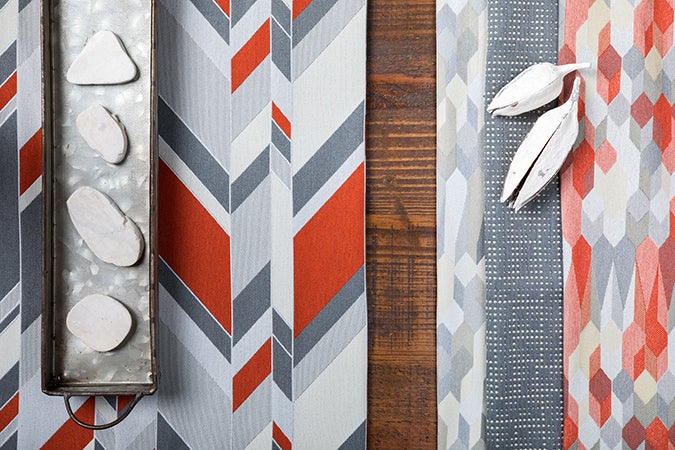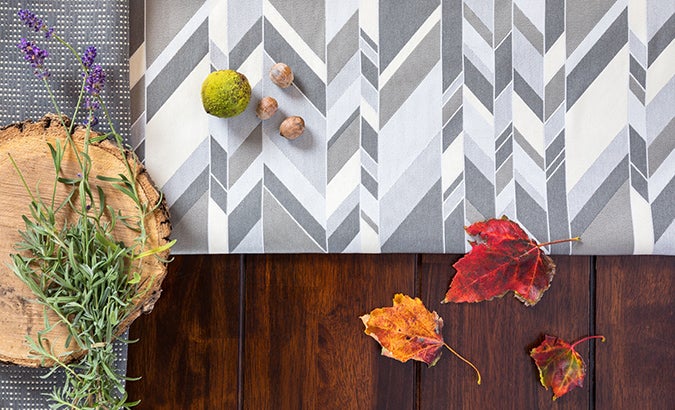
Why Performance-Based Textiles are On the Rise
As space in all business industries evolves, we are finding that the need for performance-based woven and non-woven textiles on the rise. This increased demand means that textile manufacturers are continually working with mills and fiber producers to find the best performing fibers, whether they be natural or synthetic, to withstand high-use, high-abuse environments.
The performance characteristics desired are then carefully balanced with environmental considerations for the client, which may include recycled content and a textile that is free from formaldehyde, perfluorinated compounds, PVCs, antimicrobials and flame retardants to name a few. Increasingly, clients are demanding environmentally viable options that do not sacrifice performance.
So what makes a textile high performing? The Association for Contract Textiles is a professional trade association that establishes and promotes voluntary performance and environmental guidelines for textiles for commercial interiors. ACT provides performance guidelines for six specific characteristics of woven, coated and knit fabrics:
- Flammability: Measurement of a fabric’s performance when it is exposed to specific sources of ignition (woven, coated and knitted fabrics)
- Wet & Dry Crocking: Transfer of dye from the surface of a dyed or printed fabric onto another surface by rubbing (woven and knitted fabrics); transfer of colour from the surface of a solid or printed fabric onto another surface by rubbing (coated fabrics)
- Colorfastness to Light: Degree of resistance to the fading effect of light (woven and knitted fabrics); a fabric’s ability to resist fading, gloss change and surface deterioration (coated fabrics)
- Physical Properties: Pilling, breaking strength, seam slippage (woven fabrics); adhesion of coating, tear strength, hydrolysis resistance, and stretching and setting (coated fabrics); and pilling, breaking strength, tear strength, snagging, stretching and setting (knit fabrics)
- Abrasion Low Traffic: Surface wear of a fabric caused by friction (woven fabrics); surface wear of a fabric caused by rubbing and contact with another fabric (knitted fabrics)
- Abrasion High Traffic: Surface wear of a fabric caused by friction (woven and coated fabrics); surface wear of a fabric caused by rubbing and contact with another fabric (knitted fabrics)

Public and multi-use spaces in corporate, retail and education settings are seeing food consumption in areas where just a few years ago food was not allowed. Designers are creating spaces with furniture and flexible layouts to accommodate food consumption. These spaces are designed not only to accommodate the casual coffee and scone, but also to flex to accommodate fully catered meetings. Food and drink are being consumed in these public or multiuse spaces sometimes 24/7.
Performance textiles typically designed for healthcare and other high-abuse environments are being selected for cleanability and durability in these types of spaces. Performance challenges are similar to healthcare and include cleanable, stain resistance, wear, stability, dynamic seam fatigue and moisture issues, to name a few. Typical issues we find when designing for the healthcare environment are permeating all business industries. Effects of harsh cleaning agents (including bleach), fading and deterioration of textile appearance are real issues.
As designers, we are challenged with weighing the many considerations of what type of textile to use in an environment before we even address the aesthetics of the goods. In addition to the abuse the textile will face during its lifecycle, we also have to assess how well it can be maintained in the end use environment. We strive to select the appropriate textile that will outperform expectations as well as contribute to the design of the space.
When determining whether a performance textile is the right choice for your project consider the following questions:
- How many hours a day will the space be used? 24-hour use or split shift use can benefit from performance textiles.
- Will food be consumed in the space either as a planned activity or casually? Performance textiles allow for easier cleaning of food and drink staining without added protection.
- Will the space be exposed to high use or abuse by the occupants? If so, a performance textile will perform better under these harsh conditions.
- Is cleaning and disinfecting a priority? If so, they will withstand the harsher cleaning agents.

Performance-type textiles are also being offered by all major residential furniture players now. The specification is targeted at the kid/pet-proof market of buyers. As residential design becomes more casual in open flexible spaces, the use of furniture is affected. Clients are paying for that performance textiles to ensure the white sofa they dream about will have lasting value in the home.
When embarking on a new design collaboration with our 20-year partner Architex International, we will be looking at these cross over markets for patterning and colourway inspiration. Approaching the market with this knowledge in mind will allow us to grow the specification field of our performance textiles, while addressing the needs of the healthcare marketplace.

